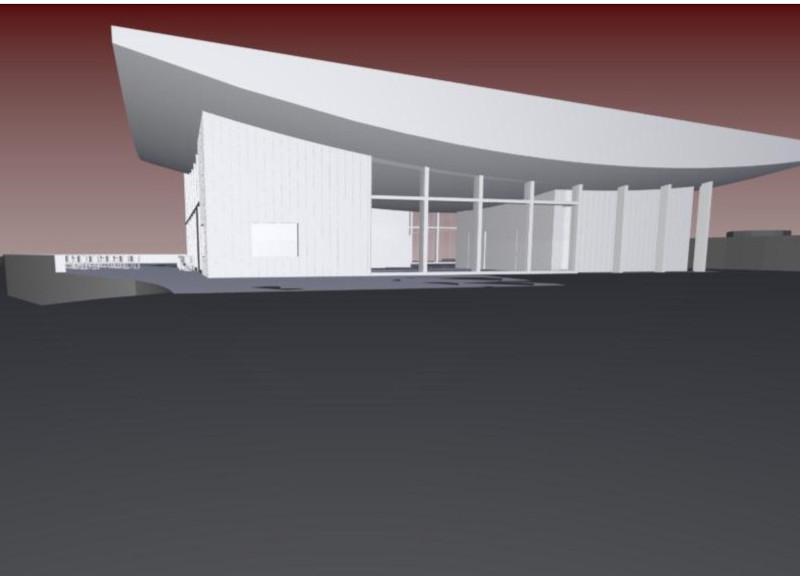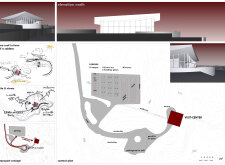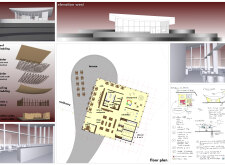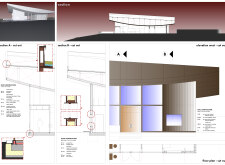5 key facts about this project
The design takes the form of a caldera, establishing a strong link with the geographical features around Northside Relation Lake. The approach focuses on integrating with the landscape, promoting a space that serves both public and private functions. Open views toward the lake and surrounding hills are maximized, enhancing the overall experience for those who use the building.
Materials and Structure
The layout emphasizes functionality and ease of movement, with a clear distinction between public and private areas. Public spaces include a café, kitchen, exhibition area, and restrooms, supporting a range of activities and interaction among visitors. In contrast, private spaces, such as staff offices and information points, are strategically placed to ensure privacy and operational efficiency. This thoughtful organization encourages fluid movement throughout the building.
Roof and Drainage
The caldera-inspired roof design functions not just as an architectural element, but also addresses practical concerns regarding water management. The shape directs rainwater toward drainage systems, preventing water accumulation and maintaining the integrity of the structure. Additionally, the inclusion of terraces allows users to connect with the surrounding environment, promoting outdoor engagement and enhancing the building’s relationship with nature.
Sustainability Features
Sustainability extends through various aspects of the design. Photovoltaic systems are employed for generating renewable electricity, while geothermal heat pumps provide an effective heating solution. These features contribute to reducing the overall environmental footprint of the building and highlight a commitment to energy efficiency.
Materials listed in the design include cladding, wooden planks, and a waterproof membrane used in the roof construction to ensure durability. The flooring utilizes parquet finishes, combined with a waterproof concrete membrane for functional performance. Together, these elements create a cohesive response to the site and reinforce a practical approach to environmental design.





















































